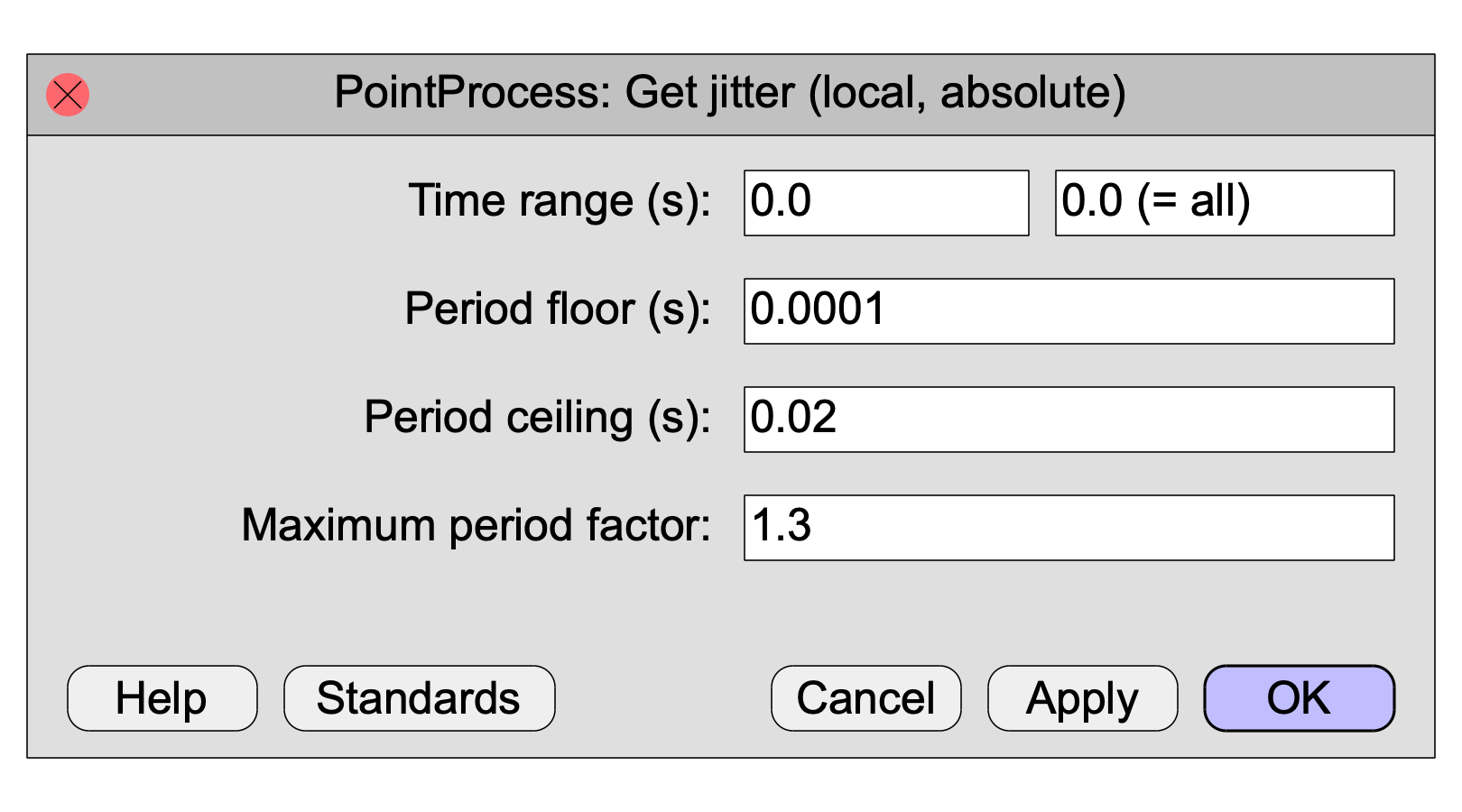
|
A command that becomes available in the Query submenu when you select a PointProcess object.
This command will write into the Info window the absolute local jitter, which is the average absolute difference between consecutive intervals, in seconds (an interval is the time between two consecutive points).
As jitter is often used as a measure of voice quality (see Voice 2. Jitter), the intervals are often considered to be glottal periods. For this reason, the command has settings that can limit the possible duration of the interval (or period) or the possible difference in the durations of consecutive intervals (periods).

The local jitter can be used as a measure of voice quality. See Voice 2. Jitter.
The absolute local jitter is defined as the absolute (i.e. non-relative) mean absolute (i.e. non-negative) second-order difference of the point process (= the first-order difference of the interval process), as follows.
The absolute local jitter (in seconds) is the mean absolute (non-negative) difference of consecutive intervals:
| jitter(seconds) = ∑i=2N |Ti - Ti-1| / (N - 1) |
where Ti is the duration of the ith interval and N is the number of intervals. If an interval Ti-1 or Ti is not between Period floor and Period ceiling, or if Ti-1/Ti or Ti/Ti-1 is greater than Maximum period factor, the term |Ti - Ti-1| is not counted in the sum, and N is lowered by 1 (if N ends up being less than 2, the result of the command is undefined).
© ppgb 20221202